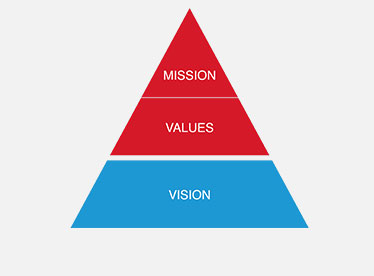-
Products
-
Transportation & Mobility Solutions
Transportation & Mobility Solutions
At Hitachi, we engineer industry-leading transportation and mobility solutions by leveraging decades of knowledge and using high-quality automotive material and components.
-
Energy Solutions
Energy Solutions
We believe the only solution for fulfilling the growing power requirements of industries and society is through a comprehensive portfolio of sustainable energy solutions and delivering innovative high-efficiency energy systems.
-
IT Infrastructure Services
IT Infrastructure Services
Hitachi’s state-of-the-art IT products and services are known to streamline business processes which result in better productivity and a higher return on investment (ROI).
-
Social Infrastructure: Industrial Products
Social Infrastructure: Industrial Products
Within the industrial sector, Hitachi is consistently delivering superior components and services, including industrial and automation solutions, useful in manufacturing facilities.
-
Healthcare & Life Sciences
Healthcare & Life Sciences
At Hitachi, we believe that healthcare innovation is crucial to a society’s advancement. A strong healthcare sector is often considered an inseparable element of a developed society.
-
Scientific Research & Laboratory Equipments
Scientific Research & Laboratory Equipments
Hitachi focuses on extensive research and development, transformative technology, and systems innovation to unfold new possibilities and create new value through scientific endeavors that strengthen the connection between science and social progress.
-
Smart Audio Visual Products
Smart Audio Visual Products
Since 1956, Hitachi audio visual products have provided state of the art solutions to consumers all over the world. It has been our pleasure to design competitive products at the lowest possible prices while maintaining our industry-leading quality standards for your comfort and enjoyment.
-
View All Products
Hitachi Products & Solutions
Hitachi, a technology leader in the U.S., offers a diverse set of products and solutions, and breakthrough technologies for smart manufacturing, green energy and mobility solutions that empower governments, businesses, and communities.
-
Transportation & Mobility Solutions
- Social Innovation Solutions
-
About Us
-
Hitachi in the U.S.A.
Hitachi in the U.S.A.
Discover information about the Hitachi group network across the Americas, upcoming events and sustainability endeavours, CSR policies, and corporate government relations.
-
About Hitachi Group
About Hitachi Group
Explore our leadership team, investor relations, environmental vision, and sustainability goals. Learn how Hitachi is leveraging its research & development capabilities for social innovation across industry verticals.
-
Hitachi in the U.S.A.
- News Releases
- Case Studies
- Careers
- R&D
Hitachi Announces the Conclusion of Absorption-type Company Split Agreement Relating to Reorganization of the System Solutions Business
Tokyo, February 10, 2015 --- Hitachi, Ltd. (TSE: 6501, “Hitachi”) announced on September 2, 2014 that it would succeed the system solutions business in the social infrastructure, financial, and government & public sectors in Hitachi Solutions, Ltd. (“Hitachi Solutions”) and integrate such businesses into its Information & Telecommunication Systems Company on April 1, 2015, through an absorption-type company split (the “Company Split”). The purpose of the transfer is to optimize its business structure to drive further growth of the Hitachi Group’s information & telecommunication systems business. Having concluded the company split agreement (the “Company Split Agreement”) with Hitachi Solutions today, Hitachi has announced matters as follows, some of which had not yet been decided in the news release on September 2, 2014. The matters which have been decided in the Company Split Agreement and changes since the previous news release are underlined.
1. Outline of the Company Split
(1) Schedule of Company Split
|
Execution of Company Split Agreement |
February 10, 2015 |
|
Scheduled Company Split Date (Effective Date) |
April 1, 2015 (Tentative) |
* For Hitachi, the Company Split is deemed to be a simple absorption-type company split pursuant to Article 796, Paragraph 3 of the Companies Act of Japan. And for Hitachi Solutions, the Company Split is deemed to be a short-form absorption-type company split pursuant to Article 784, Paragraph 1 of the Companies Act of Japan. Therefore, Hitachi and Hitachi Solutions do not plan to convene shareholders’ meetings to obtain approval for the Company Split agreement.
(2) Method of Company Split
This is an absorption-type split in which Hitachi Solutions is the transferring company and Hitachi is the successor company.
(3) Details of Allotments Related to the Company Split
Hitachi will not allot any money to Hitachi Solutions as consideration for the Company Split.
(4) Handling of Stock Acquisition Rights and Bonds with Stock Acquisition Rights
Accompanying the Company Split
Hitachi Solutions has no outstanding stock acquisition rights or bonds with stock acquisition rights.
(5) Changes in Capital Accompanying the Company Split
The Company Split will result in no change in capital of Hitachi.
(6) Succession of Rights and Obligations
Hitachi will succeed to all rights and obligations of Hitachi Solutions, which is stipulated in the Company Split Agreement, including assets, liabilities, intellectual property, the statuses under contract and labor agreements with Hitachi Solutions’ employees.
(7) Prospect on Fulfillment of Obligations
It is judged that there should be no concern about fulfilling all obligations that should be borne by Hitachi.
2. Profile of the Parties of the Company Split
|
Successor Company |
Transferring Company | ||
|
(1) |
Name |
Hitachi, Ltd. |
Hitachi Solutions, Ltd. |
|
(2) |
Head Office |
6-6, Marunouchi 1-Chome, Chiyoda-ku, Tokyo |
4-12-7 Higashishinagawa, Shinagawa-ku, Tokyo |
|
(3) |
Representative |
Toshiaki Higashihara, President & COO |
Kaichiro Sakuma, President and Chief Executive Officer |
|
(4) |
Business |
Development, manufacture and sales of products and provision of service across 10 segments: Information & Telecommunication Systems, Power Systems, Social Infrastructure & Industrial Systems, Electronic Systems & Equipment, Construction Machinery, High Functional Materials & Components, Automotive Systems, Smart Life & Ecofriendly Systems, Others (Logistics & Other services), Financial Services |
Software and services business, sales of information processing equipment |
|
(5) |
Capital |
458,790 million yen (As of March 31, 2014) |
38,758 million yen*4 (As of March 31, 2014) |
|
(6) |
Established |
February 1, 1920 |
September 21, 1970 |
|
(7) |
Number of issued shares |
4,833,463,387 (As of March 31, 2014) |
85,458,000 (As of March 31, 2014) |
|
(8) |
Fiscal year end |
March 31 |
March 31 |
|
(9) |
Major shareholders and shareholding |
The Master Trust Bank of Japan, Ltd. (Trust Account) 6.84% Japan Trustee Services Bank, Ltd. (Trust Account) 5.11% Hitachi Employees’ Shareholding Association 2.19% Nippon Life Insurance Company 1.98% NATS CUMCO 1.72% (As of March 31, 2014) |
Hitachi, Ltd. 100% |
|
(10) |
Financial conditions and business results for the most recent fiscal year (Millions of yen unless otherwise specified) | ||
|
Net assets |
3,852,464 (Consolidated) |
135,471 (Unconsolidated) | |
|
Total assets |
11,016,899 (Consolidated) |
219,105 (Unconsolidated) | |
|
Net assets per share (yen)*1 |
549.02 (Consolidated) |
1,585.24 (Unconsolidated) | |
|
Revenues |
9,616,202 (Consolidated) |
285,456 (Unconsolidated) | |
|
Operating income |
532,811 (Consolidated) |
17,878 (Unconsolidated) | |
|
Ordinary income*2 |
568,182 (Consolidated) |
19,451 (Unconsolidated) | |
|
Net income*3 |
264,975 (Consolidated) |
10,875 (Unconsolidated) | |
|
Net income per share (yen)*3 |
54.86 (Consolidated) |
127.26 (Unconsolidated) | |
*1 Since Hitachi has been adopting U.S. accounting standards, this figure represents total Hitachi, Ltd. stockholders’ equity per share.
*2 Since Hitachi has been adopting U.S. accounting standards, this figure represents income before income taxes.
*3 Since Hitachi has been adopting U.S. accounting standards, these figures represent net income attributable to Hitachi, Ltd. stockholders and net income attributable to Hitachi, Ltd. stockholders per share basic, respectively.
*4 Hitachi Solutions will decrease its capital to 20,000 million yen on April 1, 2015.
3. Overview of the Business to Be Transferred
(1) Business to Be Transferred
System solutions business in the social infrastructure*5, financial, and government & public sectors
*5 The business in social infrastructure sector does not include the telecommunication business.
(2) Business Results of the Business to Be Transferred (Unconsolidated)
Revenues: 137,155 million yen (Year ended March 31, 2014)
(3) Assets and Liabilities to Be Transferred (Forecast for the end of March, 2015)
(Millions of yen)
|
Category |
Details |
Amount |
|
Assets to be transferred |
Parts of Cash and deposit, Other assets concerning the businesses to be transferred (excluding Trade receivables), Real estate assets, Movable assets, Intangible assets, Other investments such as marketable securities and investments in affiliates |
71,455 |
|
Liabilities to be transferred |
Liabilities concerning the businesses to be transferred (excluding Trade payables) |
19,700 |
|
Net amount |
- |
51,755 |
Cautionary Statement
Certain statements found in this document may constitute “forward-looking statements” as defined in the U.S. Private Securities Litigation Reform Act of 1995. Such “forward-looking statements” reflect management’s current views with respect to certain future events and financial performance and include any statement that does not directly relate to any historical or current fact. Words such as “anticipate,” “believe,” “expect,” “estimate,” “forecast,” “intend,” “plan,” “project” and similar expressions which indicate future events and trends may identify “forward-looking statements.” Such statements are based on currently available information and are subject to various risks and uncertainties that could cause actual results to differ materially from those projected or implied in the “forward-looking statements” and from historical trends. Certain “forward-looking statements” are based upon current assumptions of future events which may not prove to be accurate. Undue reliance should not be placed on “forward-looking statements,” as such statements speak only as of the date of this document.
Factors that could cause actual results to differ materially from those projected or implied in any “forward-looking statement” and from historical trends include, but are not limited to:
- economic conditions, including consumer spending and plant and equipment investment in Hitachi’s major markets, particularly Japan, Asia, the United States and Europe, as well as levels of demand in the major industrial sectors Hitachi serves, including, without limitation, the information, electronics, automotive, construction and financial sectors;
- exchange rate fluctuations of the yen against other currencies in which Hitachi makes significant sales or in which Hitachi’s assets and liabilities are denominated, particularly against the U.S. dollar and the euro;
- uncertainty as to Hitachi’s ability to access, or access on favorable terms, liquidity or long-term financing;
- uncertainty as to general market price levels for equity securities, declines in which may require Hitachi to write down equity securities that it holds;
- uncertainty as to Hitachi’s ability to continue to develop and market products that incorporate new technologies on a timely and cost-effective basis and to achieve market acceptance for such products;
- rapid technological innovation;
- the possibility of cost fluctuations during the lifetime of, or cancellation of, long-term contracts for which Hitachi uses the percentage-of-completion method to recognize revenue from sales;
- fluctuations in the price of raw materials including, without limitation, petroleum and other materials, such as copper, steel, aluminum, synthetic resins, rare metals and rare-earth minerals, or shortages of materials, parts and components;
- fluctuations in product demand and industry capacity;
- uncertainty as to Hitachi’s ability to implement measures to reduce the potential negative impact of fluctuations in product demand, exchange rates and/or price of raw materials or shortages of materials, parts and components;
- increased commoditization of and intensifying price competition for products;
- uncertainty as to Hitachi’s ability to achieve the anticipated benefits of its strategy to strengthen its Social Innovation Business;
- uncertainty as to the success of restructuring efforts to improve management efficiency by divesting or otherwise exiting underperforming businesses and to strengthen competitiveness;
- uncertainty as to the success of cost reduction measures;
- general socioeconomic and political conditions and the regulatory and trade environment of countries where Hitachi conducts business, particularly Japan, Asia, the United States and Europe, including, without limitation, direct or indirect restrictions by other nations on imports and differences in commercial and business customs including, without limitation, contract terms and conditions and labor relations;
- uncertainty as to the success of alliances upon which Hitachi depends, some of which Hitachi may not control, with other corporations in the design and development of certain key products;
- uncertainty as to Hitachi’s access to, or ability to protect, certain intellectual property rights, particularly those related to electronics and data processing technologies;
- uncertainty as to the outcome of litigation, regulatory investigations and other legal proceedings of which the Company, its subsidiaries or its equity-method affiliates have become or may become parties;
- the possibility of incurring expenses resulting from any defects in products or services of Hitachi;
- the potential for significant losses on Hitachi’s investments in equity-method affiliates;
- the possibility of disruption of Hitachi’s operations by earthquakes, tsunamis or other natural disasters;
- uncertainty as to Hitachi’s ability to maintain the integrity of its information systems, as well as Hitachi’s ability to protect its confidential information or that of its customers;
- uncertainty as to the accuracy of key assumptions Hitachi uses to evaluate its significant employee benefit-related costs; and
- uncertainty as to Hitachi’s ability to attract and retain skilled personnel.
The factors listed above are not all-inclusive and are in addition to other factors contained in other materials published by Hitachi.






